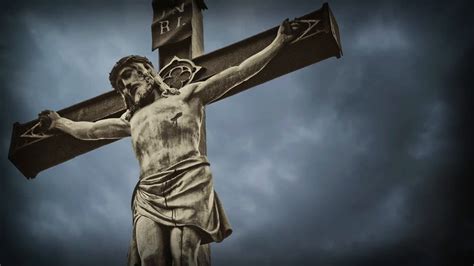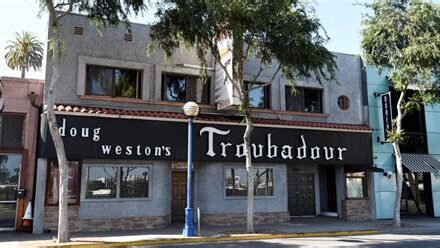A Review:“EO,” a film by Polish director Jerzy Skolimowski and a 2023 Oscar nominee for Best International Feature Film, has garnered more than its share of critical praise here and abroad. Unlike “Living,” the nearly exact remake of Kurosawa’s “Ikiru,” which I reviewed recently, “EO” is not so much a remake of a famous film as a borrowing of a central idea. The craft of the newer movie is undeniable; whether it will appeal to all viewers is another matter. An even greater question is whether “EO” achieves the moral weight it obvious seeks to convey.
“EO’s” famous antecedent is Robert Bresson’s 1966 effort “Au Hasard, Balthazar” (“Balthazar at Random”), a tale of Marie (Anne Wiazemsky) a young girl in a French village near the Spanish border who, thanks to the purchase of a donkey by some visiting children, lives her youth and early adult years in the presence of Balthazar, the donkey of the title. It’s setting remains consistently local, with the humans and one animal never straying far from “home.” Although the title may suggest a story of an animal, the action revolves chiefly around Marie, two young men, Gérard (François Lafarge) and Jacques (Walter Green), Marie’s father (Philippe Asselin), and Arnold (Jean-Claude Guilbert).
Balthazar pops in an out of their lives, doing what is required of him,receiving love, experiencing neglect, taking beatings, and in the end finding death through the selfishness and villainy of Gérard. The tale unquestionably draws the viewer’s attention to a quiet, simple, and obedient creature, an innocent amid a world of pride, foolishness, and cruelty. Because the plot is mostly propelled by the humans, it is farily easy to grasp how one event leads to another.
Not so with “EO.” Skolimowski allows his plot to unfold primarily through the eyes of EO the donkey (actually played by six donkeys). The effect can be both confusing and ingenious. Because a donkey does not think about his life as planned logically, he experiences events as discrete moments. As a result, it’s possible to regard “EO” as, say, half a dozen films, each featuring EO, connected through the imagination of the viewer. (Note: spoilers ahead.)
When we meet EO, he is a performing donkey in a small circus, Cyrk Orion, trained by his co-star Kassandra (Sandra Drzymalska). From all appearances, he is a success and loved, at least by Kassandra. But success does not last as bankruptcy closes the show to the great delight of protesting animal rights activists. To them, EO and the other animals are “tortured” even though there’s no evidence of it.
In fact, the one steady memory EO has is of the loving Kassandra. But Cyrk Orion’s assets, the animals among them, are taken, and EO begins the first leg of his sad odyssey at a posh horse-training stable, where he pulls a cart with feed for the “noble” steeds. An allegory of class? Well, just maybe. One day, he walks away with the unattended cart, a move that causes a trophy case (in the stables!) to fall over, and, before you know it, EO is sent to a new home.
He next finds himself on a farm with other donkeys, which appears ideal. The man and woman who operate it bring in children to ride the beasts; they feed and care for the animals as much as anyone would demand.
But EO is not happy, given his recurring memories of Kassandra. And, lo and behold, one evening she rides down the road seated behind her boyfriend on a motorcycle. The boyfriend is impatient, if not downright intolerant, about the whole business and threatens to leave her, but she, slightly drunk, insists on approaching the fence to give EO one last hug. Her love is real, but the irony is that her sentimental attachment and departure leaves EO longing for more. He kicks a couple of rails off their posts and escapes from the one place where, over time, he might have been happy.
From there EO wanders into the forest and eventually into a town where, as one event leads to another, he ends up at a soccer match of locals, the fans of each club acting as belligerently and thuggishly as recent history has led us to expect. A player misses a penalty shot, the winning one at that, because EO brays loudly as he kicks the ball. Immediately, the victors adopt the hero donkey and parade to their local, rather squalid pub to celebrate. But the other team’s fans, a clan of skin- headed hoods, arrives to smash up the joint, as well as a few heads. The second they see EO placidly grazing outside, they attack and nearly beat him to death.
Rescued by a compassionate vet who slowly nurses him back to health, EO continues his life at a complex filled with various animals, once again pulling a cart. But when he kicks an attendant, possibly to death, he finds himself in an eighteen-wheeler with several horses headed, one supposes, to the glue factory.
The trucker cares nothing about EO and manages to get himself murdered at a truck stop. Meanwhile, Vito (Lorenzo Zurzolo), a young man who’s run out of gas, walks up to find several police cars at the stop, with EO tethered along a grassy bank. Does the donkey want to travel with him? He must because the next scene shows them together in a horse trailer.
Again, the story is told from EO’s perspective, so we don’t know how or when Vito and he got into the trailer. Heading through beautiful mountainous country, their destination is a grand villa where Vito lives. EO walks onto the lawn and nibbles the grass, while, quite apart from EO’s perception, Vito has gone inside to a chapel to celebrate mass for a congregation consisting chiefly of his stepmother. He is the celebrant. Nothing of this strange development is explained. What would a donkey know of that? His stepmother, the “Countess” (Isabelle Huppert) expands irately on Vito’s disgraceful life. She gives no indication that she knows of EO’s existence, which is just as well since the donkey departs through a gate that has inconveniently swung open.
The next scene briefly shows EO crossing a bridge at a hydro-electric dam, which then cuts to the final moments in which he is herded with hundreds of cattle into a large shed that’s likely a feed lot and abattoir.
Through EO’s melancholy gaze, Skolimowski provides his audience a panorama of European society: rich, poor, cruel, compassionate, loving, indifferent. Unlike Bresson, he shows us avariety of countries, adding ostensibly a more universal sense of the plight of innocence.
In an interview, Skolimowski and screenwriter Ewa Piaskowska spoke of how they discovered a Sardinian donkey with large, expressive eyes in Sicily. It was this breed that they chose for “EO.” Where did they see this miraculous beast?
As it happens, it was at a Living Nativity festival. Piaskowska said that they were sure that that was the logical ending place for the film although they knew they would have to begin in Poland and travel down country by country.
But what did she mean? If her point was one of locality, it’s as easy to believe EO was slaughtered in Italy as in France or Austria. But if she meant that EO should have found rest at last in a Nativity procession—and a very happy ending that would have been—then it’s obvious director and writer had second thoughts.
That said, I and millions of Christians know that Calvary is the penultimate and necessary step in the journey of Ultimate Innocence, so there remains a very sound logic to the slaughterhouse at “EO’s” conclusion. But for all my desires to allegorize (something the film occasionally invites), Skolimowski’s statement that the film was inspired by a love of “nature and animals” leaves me with the feeling that “EO” falls short of its own promise. Time and subsequent viewings may change my mind, but for the moment, although I think “EO” admirable for its conception, photography, and realization, I find myself wanting something more durable, more permanent than man’s inhumanity to animals. To be sure, “EO” brays to its choir, but what’s the religion?














